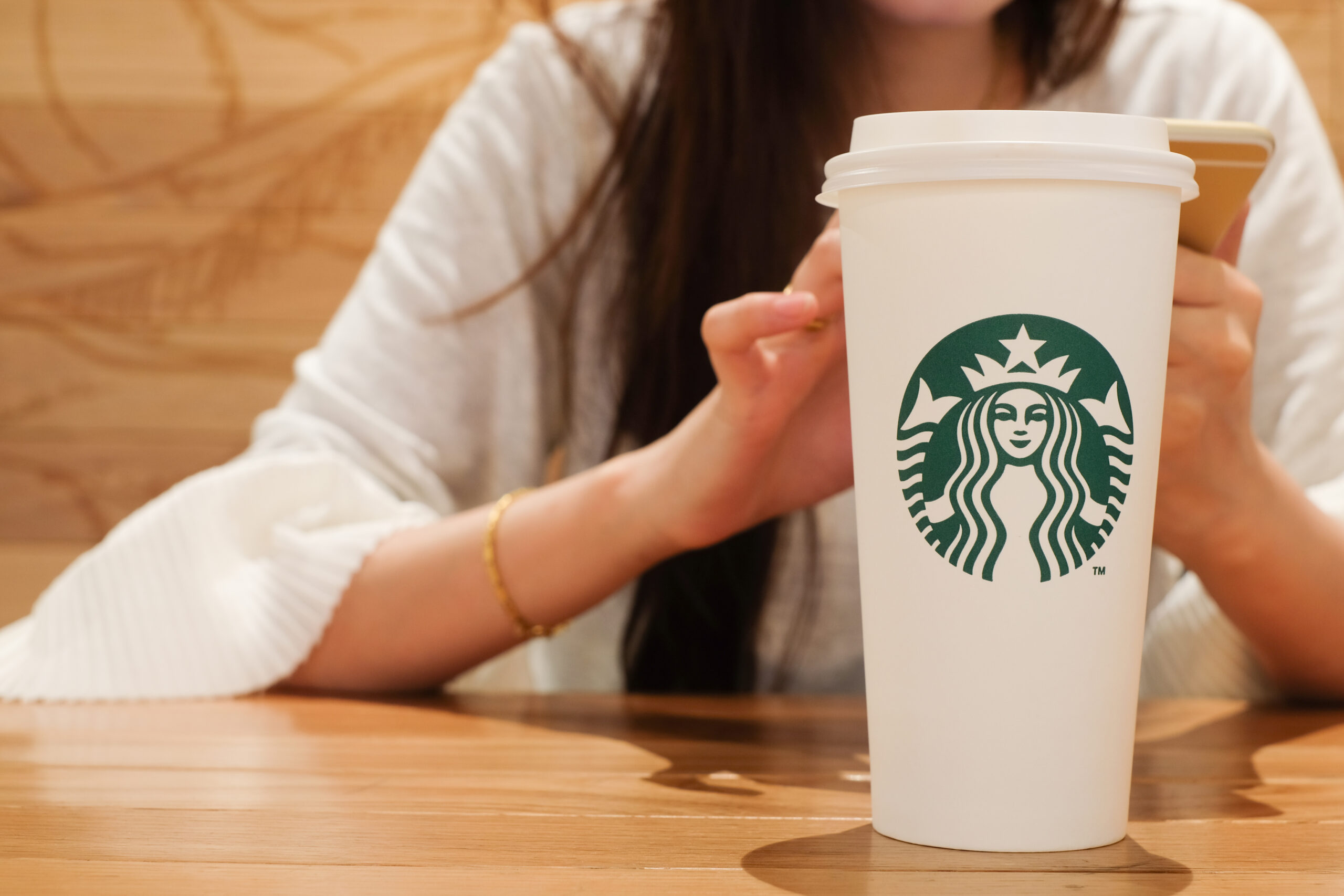By Sharon Rosa-Bohrer
With 48 million people over the age of 14 using one or more mobile payment apps last year, and with this number expected to grow by 14.5% to 55 million this year, the fight for mobile payment customers is fierce. The current in-store payment app of choice? Starbucks.
Starbucks continues to be the reigning mobile payment leader, the crème de la crème, if you will. Besting tech giants Apple, Google and Samsung Electronics at the mobile proximity payments game, Starbucks maintains its U.S. lead with a projected 23.4 million Americans using its mobile payments app in- store at least once every 6 months by year end. They were followed by Apple Pay with 22 million users, Google Pay with 11.1 million users, and Samsung with 9.9 million users, based on a May 22, 2018 eMarketer report. For Starbucks, this is only 12% of its total U.S. transactions being purchased through its own mobile wallet as of first quarter 2018. That leaves a significant upside for app payment growth among its existing coffee customers.
So what accounts for Starbuck’s mobile payment success?
Starbucks Popularity Predates Apple Pay, Google Pay and Samsung Pay
Despite the fact that payment technology has been around for several years now, Americans are still slow to catch on. In 2016, only 16.5% of the 232 million smartphones in use were used to make a mobile payment. When surveyed 80% of Americans said they had never used a contactless payment system. So although Apple Pay is accepted at more than half of U.S. merchants, Samsung Pay at 80% of merchants, and Google Pay being preinstalled on Android phones, the Starbucks app is the most popular, according to eMarketer. This is in part due to its first-mover advantage.
Introduced in 2009, Starbucks built its success by ensuring early adoption of their mobile payment app, with its ease of use and loyal customers. The app utilized simple technology- a 2D barcode that could be scanned by the register. This was an incredibly simple and innovative use of technology that could be implemented by all existing POS systems at every Starbucks location, so the uptake was swift.
Apple Pay, on the other hand, was not rolled out until 2014, and has had slower consumer acceptance than expected, although it continues to grow. Apple Pay allows users to upload credit or debit cards to their iPhone and securely pay in-store by holding the device above a contactless terminal.
Consumer adoption of Apple Pay and other third party apps has been tepid as consumers are not yet convinced of its value, according to Axios. In the 50% of all U.S. stores that offer Apple Pay, only 6.8% of iPhone users (5.8 million U.S. adults) chose to use it the last time they went into a store that accepts Apple Pay. Some of the other reasons for this are consumer concerns over security and confusion over where Apple Pay is accepted.
On the merchant side, it’s part fear and part lack of education. A lot of business owners still don’t fully understand the mobile payments technology and many think they don’t accept mobile payments or that they are not set up to take mobile wallets or digital payments. They also often think it will be expensive for them to set up. Learn the basics of mobile payments, digital wallets and NFC technology here.
This may explain Apple’s latest aggressive tactic of having enrollment into Apple Pay be automatic part of the iPhone iOS 11 set-up process. Users who opt-out see a red-circle badge over their settings icon saying their setup is incomplete. As a result, approximately 34% of new iPhone owners linked a card to Apple Pay during set-up and 18% have used it in the past 90 days, according to 451 Research.
Another drawback to third-party mobile payments is users are limited to either Apple Pay, Google Pay, or Samsung Pay based on the smartphone they use. In contrast, the Starbucks in-store mobile app is available on iOS or Android.
Customer Loyalty Key to Starbucks Success
The popularity of the Starbucks app is driven by its loyal customer base (habitual coffee drinkers) and valuable rewards program. Customers can manage their rewards, card balance and in-store payments via the app. Starbucks has created one of the most successful retail loyalty programs in the U.S. by incorporating many perks into its app use:
- Ability to load gift cards on your app- eliminate loss and add payment convenience
- Convenience- save money and time in-store
- Earn rewards and special offers
- Anyone can pay with the app, you do not have to be a rewards member
Future of Mobile Payment Apps is Bright
According to BI Intelligence, mobile payment volume is expected to soar to $503 billion by 2020. This is due to a big push from MasterCard and Visa who have decided to require that all retailer have contactless payment compatible terminals by 2020. As more consumers realize that mobile wallets are about 50% faster than using the chip card and you don’t have to worry about misplacing or using your card, usage will increase. Although competition will continue as more retailers create their own payment apps in Starbuck-like fashion, the Starbucks app is projected by eMarketer to maintain its lead through 2022 with an estimated 29.8 million users.
Learn More at Mobile Payments Conference 2018!
Discover the latest in mobile payments and technology from leaders in the field at Mobile Payments Conference 2018, August 22-24th in Chicago. Register Now!








4 Comments